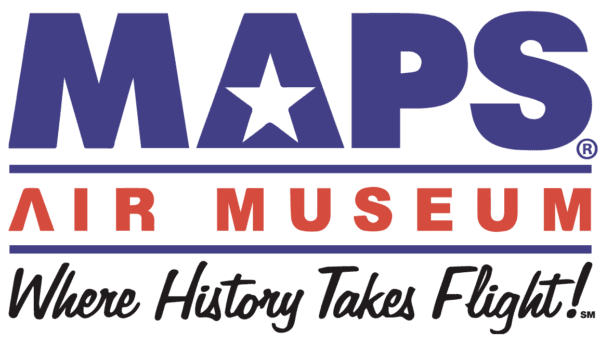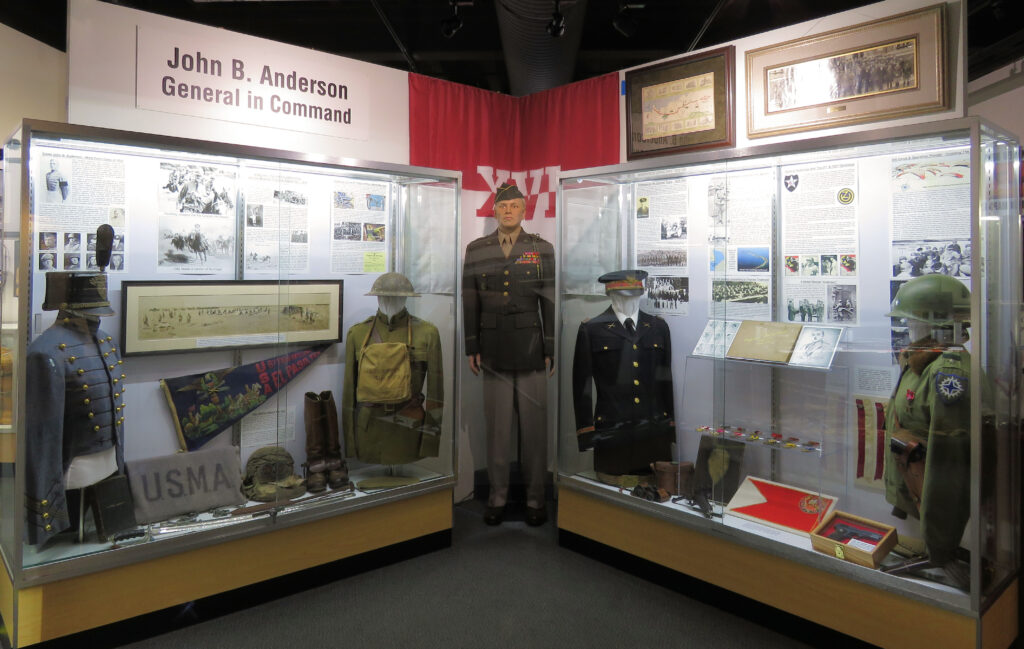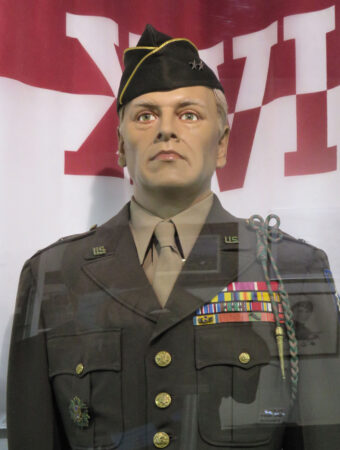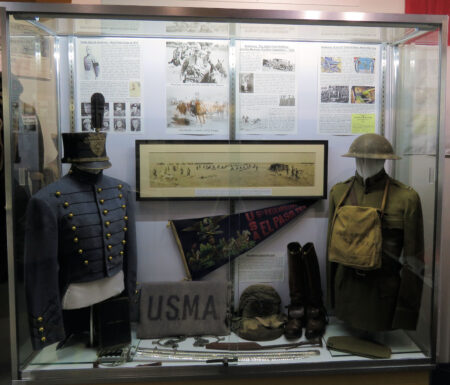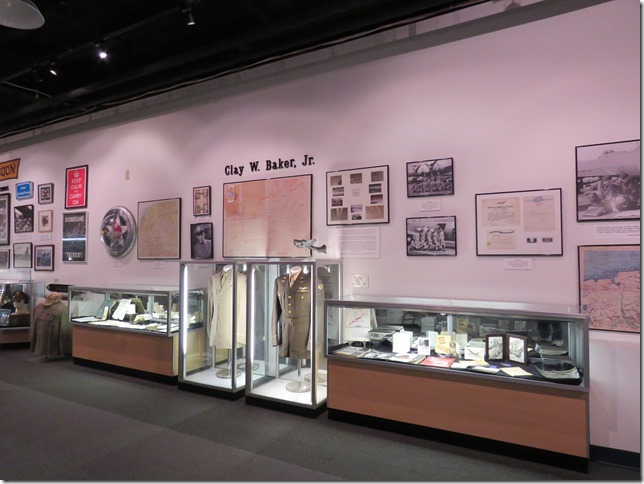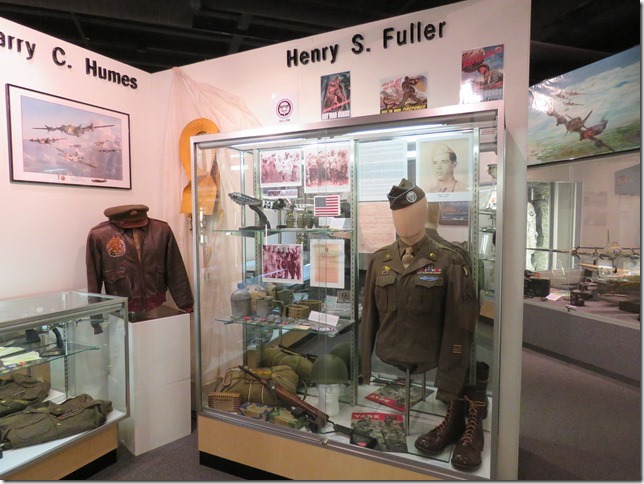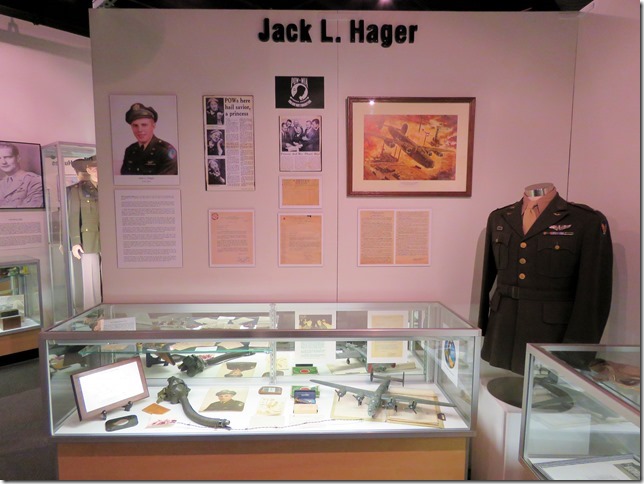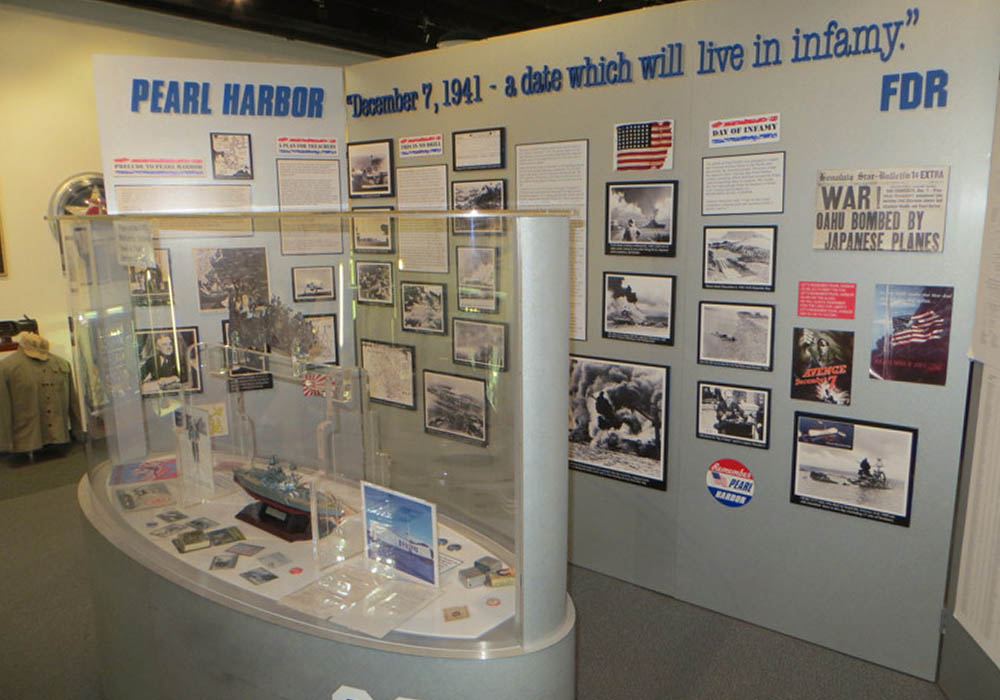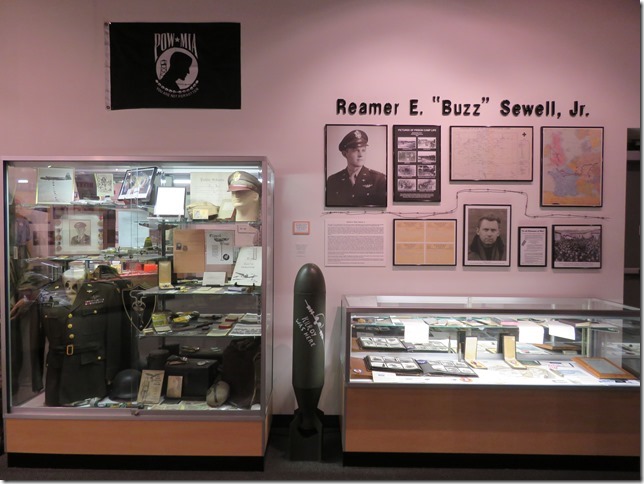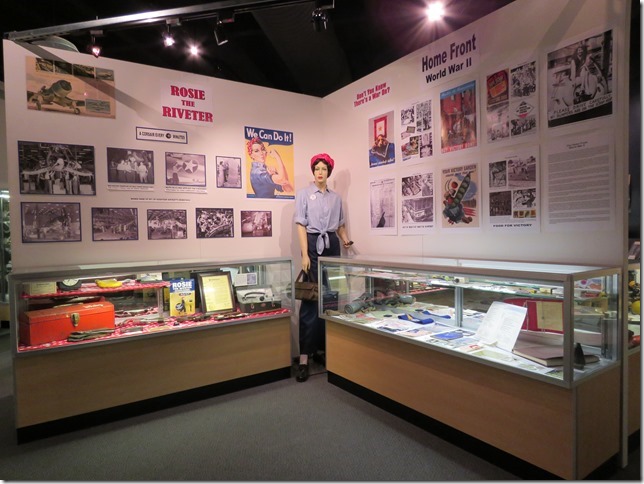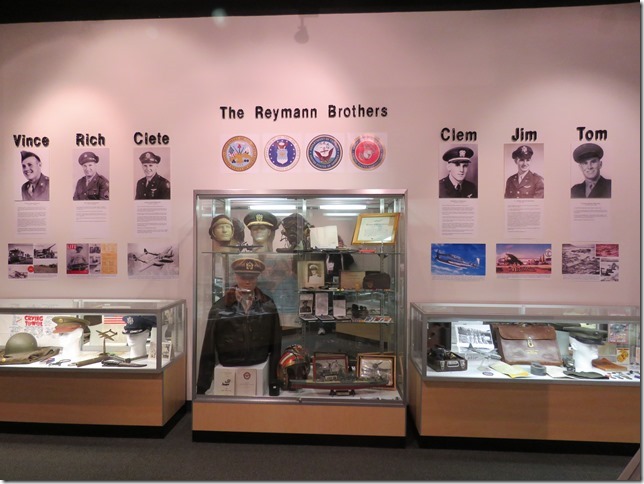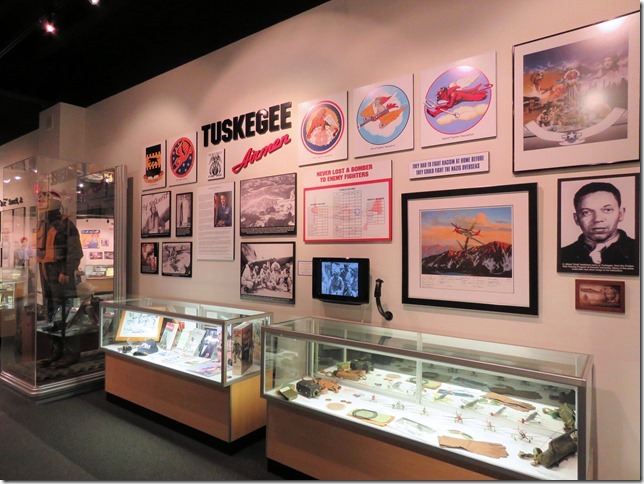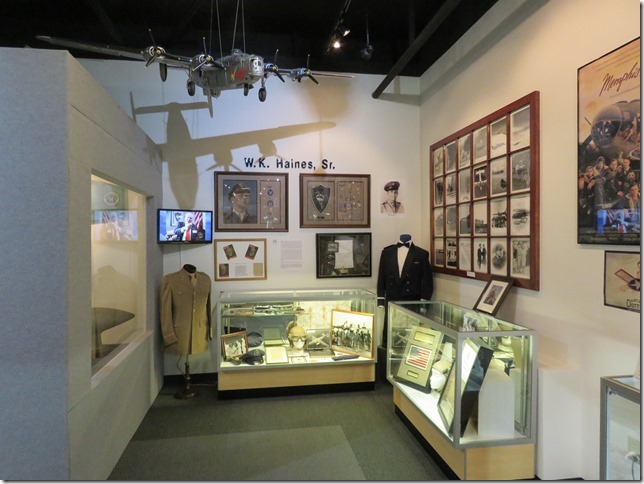Gallery Spotlight!
“Major General John Benjamin Anderson was born in Parkersburg, Iowa, on March 10, 1891, the sixth child of Danish immigrants Carl Christian and Louise Simonsen Andersen. Inspired by his older brother Nels’ service with the Iowa National Guard in the Spanish- American War, young “Ben” was appointed by Third District Congressman Burton E. Sweet and entered West Point in March, 1910.
Curator of the Army mule during the 1913 Army-Navy game, Anderson shared the sidelines with Army cheerleader Second Classman Dwight Eisenhower. Graduating 32 out of 107 members of the Class of 1914, he chose field artillery and was assigned to the Sixth Field Artillery of General John Pershing’s First Division at El Paso, Texas. He married Grace Amoleyetto Wingo in March, 1915. In 1917, the United States entered World War I. Captain Anderson divorced and was among the first wave of troops sailing for France.
He saw combat service as regimental adjutant in the Sommerville sector near Nancy and was present for the first American artillery round fired into German lines. He served as liaison with the British Expeditionary Forces at Ypres, Belgium, in February and March, 1918. He returned to the 1st Field Artillery Brigade at Toul, France, before returning to combat as battery and battalion commander with his old outfit, the Sixth Field Artillery, at Cantigny.
Anderson was ordered back to the United States in May, 1918, to train the next wave of American officers and soldiers. Promoted to the temporary rank of lieutenant colonel, he first reported to Fort Sill, Oklahoma, and then the Office of the Chief of Field Artillery in Washington, DC.
A series of school and troop assignments at home and abroad followed: 1923, Advanced Course of the Field Artillery, Fort Sill; 1923-24, Commanding Officer 83 Field Artillery at Fort Benning; 1925, Honor Graduate of the Command and General Staff School at Fort Leavenworth, Kansas; 1925-27, 24 Field Artillery in Manila; 1928, Army War College; 1928-32, War Department staff in Washington DC including War Department representative at the International Conference on Sick and Wounded Soldiers and Prisoners of War at Geneva, Switzerland; 1932-35, 13 Field Artillery Brigade at Fort Bragg, North Carolina; 1934-38, Instructor at the Command and General Staff School at Fort Leavenworth; 1938-1941, Office of the Chief of Field Artillery, Washington DC; and 1941, 2d Division Artillery Commander, Fort Sam Houston.
With the declaration of war in December 1941, Anderson left the 2d Infantry Division to organize and command the 102d Infantry Division at Camp Maxey, Texas. Promoted to major general in August, 1942, Anderson received orders in December, 1943 to command the XVI Corps at Fort Riley, Kansas.
Anderson and the XVI Corps Headquarters Company crossed the Atlantic in late September, 1944, on the Queen Mary with Prime Minister Winston Churchill aboard. Arriving in Gourock, Scotland, on September 25, 1944, Anderson’s XVI Corps sped south and arrived Omaha Beach September 28, 1944. Set up in Barneville-sur-Mer, France, the XVI Corps was assigned to Lt. Gen. William H. Simpson’s Ninth Army.
Anderson moved to the front at Tongres, Belgium, on November 30, 1944, and assigned the 78, 106, and 75thInfantry Divisions with plans to relieve the British XII Corps in the line north of Simpson’s Ninth Army. The Battle of the Bulge disrupted those plans. On December 26, 1944, Anderson joined the XVIII Airborne Corps as General Ridgway’s deputy corps commander. Anderson returned to Ninth Army on December 29, 1944, and prepared the XVI Corps for the Roer River crossing. In so doing, Anderson coordinated the relief of the British 7thArmored Division, 52nd Infantry Division, and 1 Commando Brigade by the U.S. 35th Infantry Division, the 15th Cavalry Group, and the 79nd Infantry Division on the banks of the Roer River. Roermond and Venlo, Netherlands, and Rheinberg, Germany, fell to Anderson’s XVI Corps as it closed on the west bank of the Rhine River. The bronze star was awarded Anderson for his role in this campaign.
The Rhine River crossing of 24-25 March, 1945, demonstrated Anderson’s abilities to plan, coordinate, and affect a powerful and complicated assault plan. Its success was witnessed in person by Prime Minister Winston Churchill, Field Marshal Bernard Montgomery, and General Dwight Eisenhower. Anderson personally escorted Churchill, Montgomery, and Sir Lord Alanbrooke over the Rhine to stroll on the east bank of the Rhine.
The Ruhr Pocket reduction followed. Anderson commanded the 29th, 30th, 35th, 75th, 79th infantry divisions, the 8th Armored Division, the 15th Cavalry Group, and the 17th Airborne Division and swept the entire industrial Ruhr clear of German troops. He linked up with the U.S. III Corps and XVIII Airborne Corps to complete the reduction of Ruhr pocket, crippling German wartime industries.
The Distinguished Service Medal was awarded Anderson for his role in these two campaigns.
With the German surrender, Anderson turned his attention to occupation and military government duties. The challenges of feeding liberated civilians, the maintenance of civil order, and care of displaced persons were met. For these tasks, Anderson was awarded the Legion of Merit.
After the war, Anderson returned to Washington and lived out his days with his wife Sue; his daughter Tudy and son-in-law naval aviator “Smiling Jack” Van Ness, USNA ’42; and his three grandsons Scott, John, and Michael. Army-Navy football games were always ‘interesting’ events.
Major General John B. Anderson died September 1, 1976, and is buried in Section 11, Arlington National Cemetery.”
The video below is by Steve Mitchell:

The Gallery of Heroes at MAPS Air Museum helps you explore those individuals, events and groups that have greatly shaped America’s history. Here you can see a sampling of our displays:
Come on in to MAPS to see these Heroes and learn a more detailed story on how they helped transform America, along with the many others that have sacrificed their time and in many cases, their lives.
Below are ONLINE EXTRAS for Displays currently in the Gallery of Heroes:
For the Leland J. “Lee” Kessler Display:
The Gallery of Heroes at MAPS Air Museum is also proud to have a unique access to his personal scrapbook thanks to the generosity of his family.
The digitized scrapbook has been split into three parts. The links will open in the Flipsnack website.
View Lee Kessler Scrapbook 1
View Lee Kessler Scrapbook 2
View Lee Kessler Scrapbook 3
